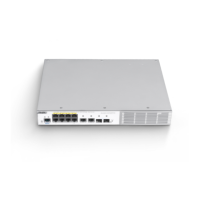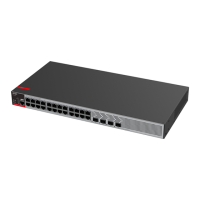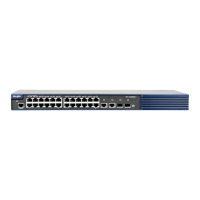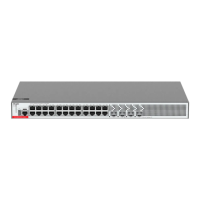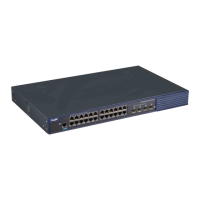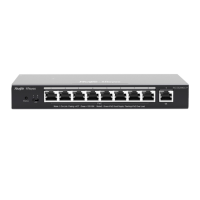Hardware Installation and Reference Guide Installing the Switch
33
Simple Connection Steps
(1) Connect one end of the RJ45 connector to the Ethernet MGMT interface of the device board, and the other
end to the NM or a control terminal
(2) Insert the single-mode or multi-mode fiber into the appropriate interface according to the identification on the
panel of the line card. Distinguish the Rx/Tx end of the fiber.
(3) Insert the twisted pair with the RJ45 port into the appropriate interface according to the identification on the
panel of the line card. Distinguish the crossover cable and straight-through cable.
3.10 Binding the Cables
Precautions
The power cables and other cables should be bound in a visually pleasing way.
When you bind fibers, be sure that the fibers at the connectors have natural bends or bends of large curvature.
Do not bind fibers and twisted pairs too tightly, as this may press the fibers and affect their service life and
transmission performance.
Simple Binding Steps
(1) Bind the drooping part of the fibers and twisted pairs of each board, and lead them to both sides of the chassis
for convenience.
(2) On the both sides of the chassis, fasten the fibers and twisted pairs to the cabinet cable management ring or
cabling chute.
(3) For the power cables, you should bind them closely along the chassis downward in a straight line wherever
possible.
3.11 Checking after Installation
Checking Cabinet
Verify that the external power supply matches with the distribution panel of the cabinet.
Verify that the front/back cabinet doors can be closed after installing the device.
Verify that the cabinet is securely fastened and will not move.
Verify that the switch has been installed in the cabinet and all cables are fasten on the cabinet.
Maintain adequate clearance around the device for air circulation, especially a minimum clearance of 200
mm (7.87 in.) around the front and back panel.
Checking Cable Connection
Make sure the fiber cable/ twisted pair matches with the interface type.
Verify that cables are properly bundled.
Verify that the grounding cables are connected properly and match the requirement.
Verify that interface cables are routed indoors. If not, check whether the power supply and interfaces are
protected from lightning strikes.
